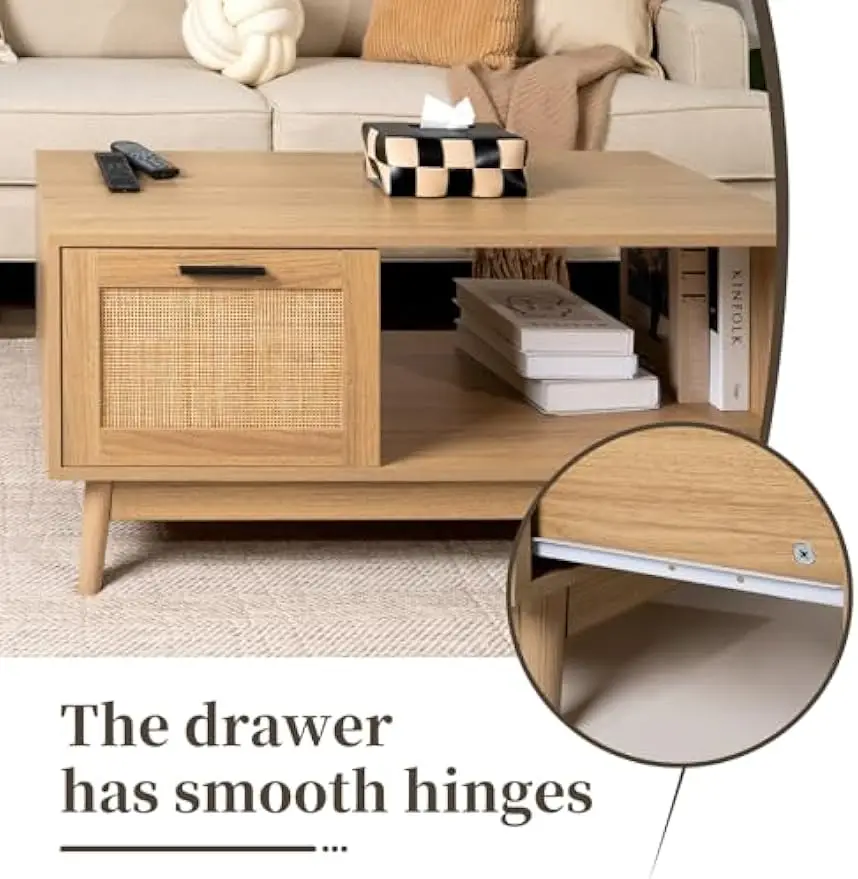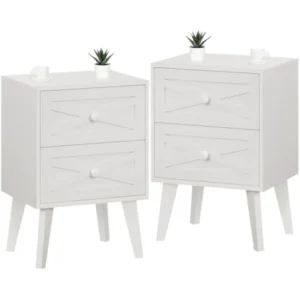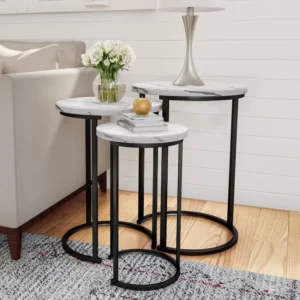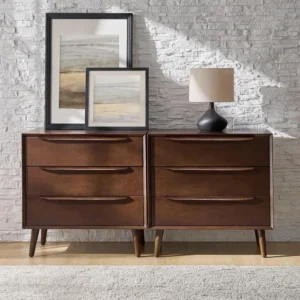The Small Space Dilemma: Why Traditional Coffee Tables Don’t Always Work
Living in compact spaces has become increasingly common in today’s world. Whether you’re in a cozy apartment, a tiny house, or simply dealing with a smaller living room, traditional furniture can sometimes feel like it’s taking over your precious floor space. Coffee tables, in particular, can be problematic.
Standard coffee tables typically measure between 40-48 inches (101-122 cm) long and can occupy a significant portion of your living area. This creates several challenges:
- They create visual and physical obstacles in tight spaces
- They restrict natural movement and flow through the room
- They can make small rooms feel even more cramped
- They often don’t provide enough storage relative to the space they consume
Despite these drawbacks, coffee tables serve important functions – providing a surface for drinks, remote controls, books, and decorative items. The good news is that removing your bulky coffee table can instantly make a room feel more spacious and open, creating a sense of breathing room in your living space.
Finding the right balance between functionality and spaciousness is key to making small spaces work better. Innovative space-saving coffee tables can transform how you use your living area, but sometimes you need to think beyond the traditional coffee table entirely.
Multi-Functional Alternatives: Furniture That Works Twice as Hard
When floor space is at a premium, every piece of furniture should earn its keep by serving multiple purposes. The best small-space solutions deliver functionality without sacrificing style. These alternatives to conventional mid-century modern coffee tables offer creative ways to maintain functionality while freeing up valuable floor area.
A. Storage Ottomans & Poufs
Ottomans are versatile workhorses in small living spaces. These soft, padded pieces typically measure 24-30 inches (61-76 cm) square or round – significantly smaller than standard coffee tables. Their multi-functional nature makes them ideal for tight quarters:
- They serve as comfortable extra seating when guests visit
- They work as footrests for relaxation
- With a sturdy tray on top, they transform into table surfaces
- Many feature hidden storage compartments for blankets, magazines, or games
For best results, choose ottomans with firm, flat tops that provide stable surfaces when needed. Durable fabrics like leather, microfiber, or performance weaves stand up well to this dual-purpose use. For even more versatility, consider small coffee tables that incorporate similar storage features in more compact footprints.
When styling your ottoman as a coffee table alternative, use decorative trays to create stable surfaces for drinks and decorative items. This simple addition transforms a soft ottoman into a functional table in seconds.
B. Storage Trunks & Benches
For those who need substantial storage but lack space for multiple furniture pieces, storage trunks and benches offer elegant solutions. These substantial pieces serve as:
- Striking focal points with character and history
- Generous storage compartments for larger items
- Sturdy surfaces for display and everyday use
- Extra seating for gatherings
Vintage coffee tables often incorporate similar design elements as antique trunks – rich materials, interesting hardware, and timeless appeal. When selecting a trunk as your coffee table alternative, pay attention to height – ideally, it should be no more than 4-6 inches (10-15 cm) lower than your sofa seat for comfortable use.
To enhance functionality, add a tray or several coasters to create stable surfaces for drinks. Cushions can transform harder trunks into comfortable seating, while styled vignettes on top bring decorative appeal to these practical pieces.
C. Nesting Tables & Tiered Side Tables
One of the smartest solutions for variable space needs is a set of nesting tables. These clever designs include multiple tables of different sizes that stack together when not in use. Space-saving nesting coffee tables offer remarkable versatility:
- They can be grouped together to create one larger surface
- They can be separated to serve different seating areas
- They occupy minimal floor space when nested
- They provide varying heights for different activities
The ability to maximize small spaces with nesting coffee tables makes them particularly valuable in compact living areas. Choose materials that complement your existing décor – wood for warmth, glass for visual lightness, or metal for industrial appeal.
For optimal flexibility, position the nested tables where they’re easily accessible but not obstructing traffic flow. Pull them out as needed for entertaining, then nest them away to reclaim floor space when they’re not required.
Space-Saving Side Tables: Small Footprint, Big Impact
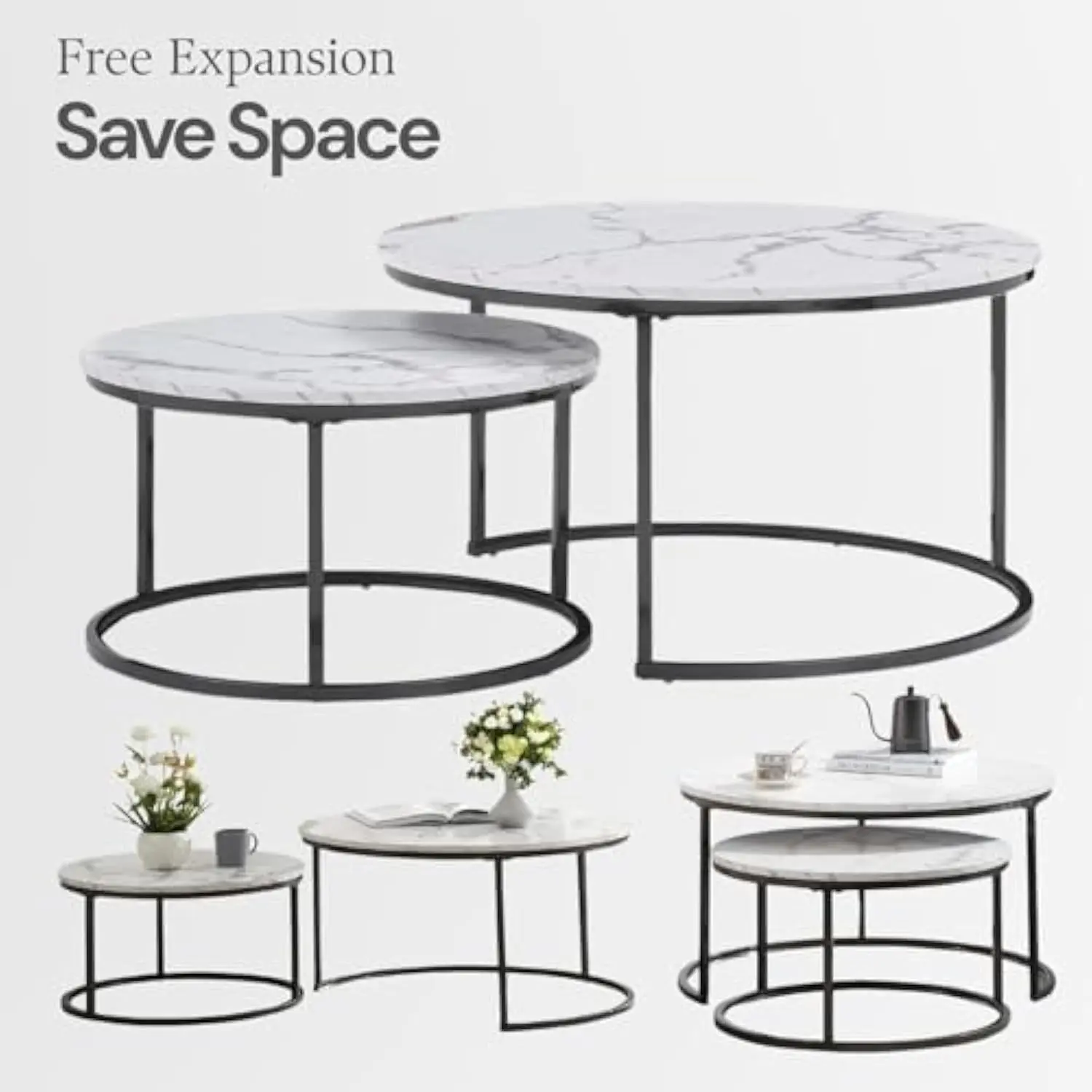
When every square inch counts, strategically placed side tables can provide the functionality of a coffee table without dominating your floor space. These smaller alternatives distribute surface area around your seating arrangement rather than concentrating it in one central piece.
A. C-Tables & Sofa-Side Tables
C-tables (named for their C-shaped design) are ingenious space-savers that slide partially under your sofa, positioning their tabletop surface directly over your lap. These clever side and end tables typically feature:
- A base that tucks under furniture, minimizing footprint
- A cantilevered surface at the perfect height for drinks or laptops
- Slim profiles that work well in tight spaces
- Mobility that allows repositioning as needed
When selecting a C-table, ensure the height aligns properly with your sofa arms for comfortable use – typically 24-26 inches (61-66 cm) is ideal. Materials like wood, metal, and glass can all work beautifully, depending on your design preferences.
C-tables excel as laptop stations, dining surfaces for casual meals, and convenient spots for drinks and remotes. Their mobility makes them perfect for small spaces where flexibility is key.
B. Folding Tray Tables & Portable Surfaces
For the ultimate in space efficiency, consider folding tray tables that can be completely stowed away when not needed. Modern interpretations of the classic TV tray have evolved into stylish, versatile pieces that bear little resemblance to their utilitarian ancestors.
When comparing options, consider how nesting tables compare to folding coffee tables for your specific space constraints. Folding tables offer:
- Complete removal from your living space when stored
- Lightweight portability for use throughout your home
- Various height options for different activities
- Affordable price points for budget-conscious decorators
Look for stable designs with locking mechanisms that prevent unwanted folding. Store these pieces in closets, behind sofas, or along walls when not in use. For a cohesive look, choose folding tables that complement your existing furniture in style and finish.
C. Wall-Mounted Drop-Leaf Tables
Wall-mounted options completely eliminate floor space concerns by utilizing vertical wall space instead. Drop-leaf tables attach to your wall and fold flat when not needed, then extend to provide surface area on demand.
When installing wall-mounted tables:
* Ensure proper anchoring to support weight (check weight limits)
* Position at standard coffee table height (16-18 inches/40-45 cm)
* Consider clearance needs when extended
* Choose finishes that complement your wall color
These versatile pieces can serve multiple functions beyond coffee tables – they make excellent impromptu dining surfaces, work stations, gaming tables, or bar areas for entertaining. Their ability to disappear against the wall when not needed makes them perfect for extremely tight spaces.
Vertical Space Solutions: Looking Up Instead of Out
In small spaces, we often focus so much on floor area that we neglect the potential of vertical space. By thinking upward instead of outward, you can create functional surfaces without sacrificing precious floor space.
A. Floating Shelves & Wall Ledges
Strategic placement of floating shelves can create coffee-table functionality without any floor footprint. These wall-mounted surfaces work best when:
- Installed at convenient heights (16-18 inches/40-45 cm from seating)
- Deep enough to hold necessary items (8-12 inches/20-30 cm is ideal)
- Positioned within easy reach of seating areas
- Styled with both decorative and functional items
Installation considerations vary based on wall type – drywall requires anchors or stud mounting, while brick or concrete needs masonry hardware. Ensure your shelves can support the weight you plan to place on them.
When styling floating shelves as coffee table alternatives, create visual balance by varying heights of objects and incorporating both practical items (coasters, small trays) and decorative elements.
B. Over-Sofa Shelving & Console Tables
Another clever vertical solution utilizes the space behind or above your sofa:
- Narrow console tables (10-12 inches/25-30 cm deep) behind sofas provide accessible surfaces
- Over-sofa shelving systems create display and storage without floor footprint
- Wall-mounted options eliminate the need for floor space entirely
When placing furniture behind sofas, maintain 6-12 inches (15-30 cm) of clearance for comfortable movement. Ensure that items on console tables or shelves don’t interfere with relaxed seating.
These solutions work particularly well in studio apartments or rooms where the sofa floats in the space rather than being placed against a wall. They create the function of a coffee table while maintaining open floor area for movement and visual spaciousness. When searching for the perfect compact coffee table for small spaces, consider these vertical alternatives that might solve your space constraints more effectively than traditional options.
Unconventional Alternatives: Thinking Outside the Box
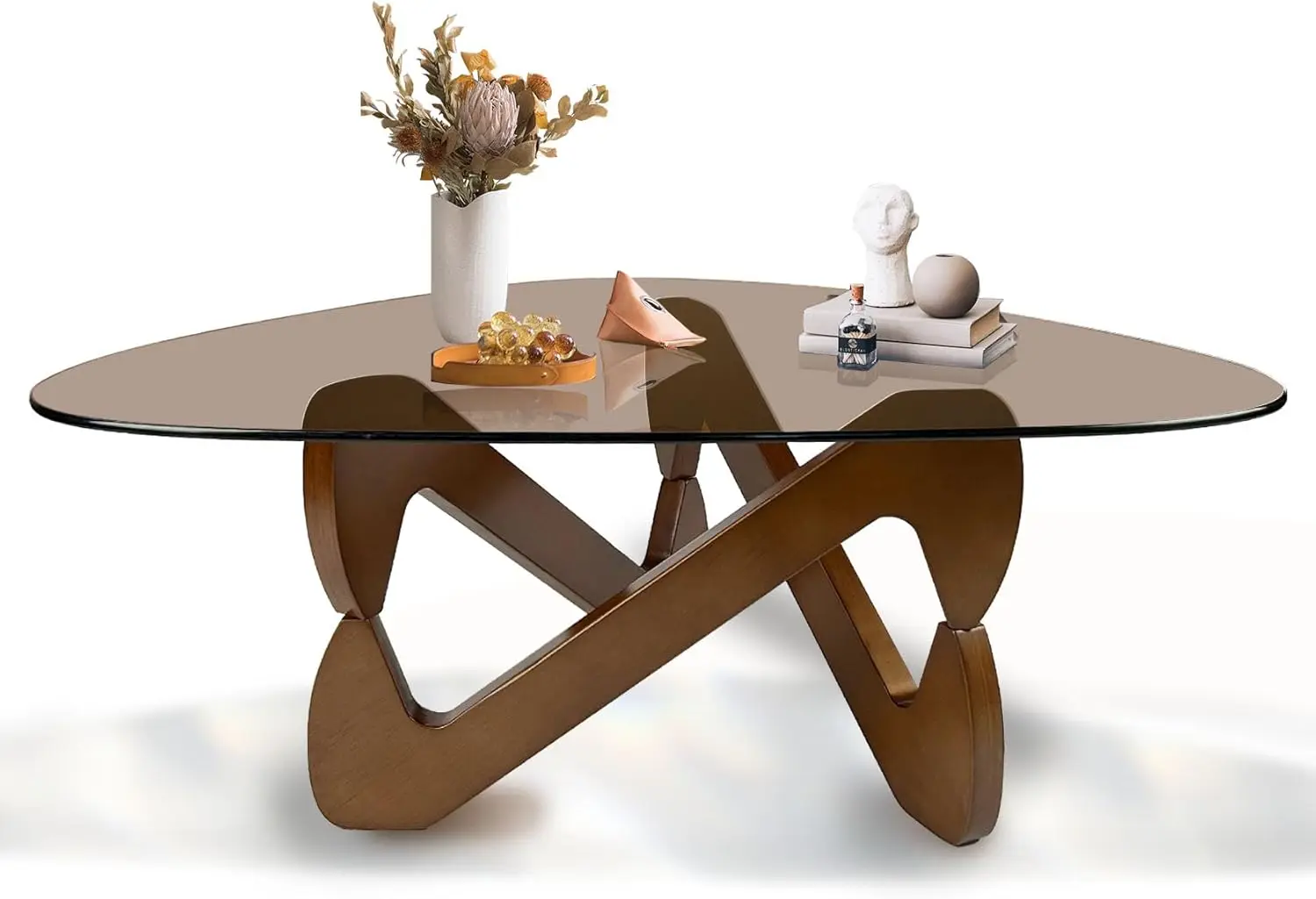
Sometimes the most effective small-space solutions come from creative thinking that breaks free from conventional furniture categories. These unexpected alternatives add personality while solving practical problems in tight spaces.
Nesting coffee tables offer one space-saving approach, but these unconventional options push creativity even further:
A. Stacked Stools & Plant Stands
Instead of one large coffee table, consider grouping several smaller pieces to create a collective surface area that can be easily reconfigured:
- Arrange 2-3 small stools or plant stands of varying heights
- Mix materials (wood, metal, ceramic) for visual interest
- Position them to create balanced composition near seating
- Separate and redistribute as needed for different activities
This approach creates a dynamic, adaptable solution that can evolve with your needs. When guests arrive, spread the small tables out to serve different seating positions. When alone, cluster them to create a more substantial central surface or move them completely out of the way.
B. Floor Cushions with Trays
For a casual, low-profile alternative with global flair, consider:
- Large, firm floor cushions topped with stable trays
- Moroccan poufs with flat, structured tops
- Japanese-inspired floor seating with integrated table elements
- Bohemian floor pillows paired with rigid serving trays
This approach works best in casual spaces where relaxed seating arrangements are appropriate. Look for trays with edges or lips that prevent items from sliding off, and cushions with enough structure to provide stable surfaces.
The combination creates flexible seating that doubles as table space – perfect for small apartments where every piece must serve multiple functions.
C. Repurposed Vintage Items
Unique character pieces can serve as unexpected coffee table alternatives while adding personality to your space:
- Vintage suitcases or trunks stacked to proper height
- Old wooden crates flipped or grouped together
- Antique step ladders with flat steps as display surfaces
- Industrial spools refinished as circular tables
When repurposing items, ensure they’re properly cleaned and stabilized. You might need to add feet for height adjustment, reinforce structural elements, or seal surfaces to make them practical for daily use.
These conversation-starting pieces add unique charm to small spaces while providing the functionality you need without conventional bulk.
Mid-Century Modern End Table Sets of 2, Mid-Century Modern Square Side & End Tables, Mid-Century Modern White Side & End Tables
$348.24 Select options This product has multiple variants. The options may be chosen on the product pageMid-Century Modern Solid Wood Coffee Tables, Mid-Century Modern Teak Coffee Tables
$879.95 Select options This product has multiple variants. The options may be chosen on the product pageMid-Century Modern Danish Coffee Tables, Mid-Century Modern Oval Coffee Tables, Mid-Century Modern Solid Wood Coffee Tables
$390.05 Select options This product has multiple variants. The options may be chosen on the product pageMid-Century Modern Nesting Side & End Tables, Mid-Century Modern Nesting Table Sets, Mid-Century Modern Round Side & End Tables
Price range: $239.35 through $273.06 Select options This product has multiple variants. The options may be chosen on the product pageMid-Century Modern End Table Sets of 2, Mid-Century Modern Walnut Side & End Tables
Price range: $978.89 through $1,957.38 Select options This product has multiple variants. The options may be chosen on the product pageMid-Century Modern Coffee & End Table Sets, Mid-Century Modern Coffee Table Sets, Mid-Century Modern Oval Coffee Tables
Price range: $257.48 through $331.04 Select options This product has multiple variants. The options may be chosen on the product page
Design Principles: Making a Coffee Table-Free Room Work
Beyond selecting the right alternative piece, successfully designing a room without a traditional coffee table requires attention to overall layout and design principles.
A. Furniture Arrangement & Traffic Flow
Without a coffee table anchoring your seating arrangement, consider these principles for balanced layouts:
- Create conversation areas with seating pieces angled toward each other
- Maintain 18-24 inches (45-60 cm) between furniture for comfortable movement
- Use area rugs to define and anchor seating groupings
- Position your coffee table alternative where it’s accessible to all seating
The absence of a large central piece often improves traffic flow through small spaces. Take advantage of this by creating clear pathways that make your room feel more spacious and functional.
Consider how people naturally move through the space and position furniture to support these patterns rather than obstruct them. Without a coffee table to navigate around, you can often position seating pieces closer together, creating more intimate conversation areas.
B. Visual Balance & Scale Considerations
Maintaining visual harmony becomes even more important when working with unconventional furniture arrangements:
- Balance larger pieces (like sofas) with appropriately scaled alternatives to coffee tables
- Consider the visual weight of materials – glass and acrylic feel lighter than solid wood
- Use color strategically to create focus or expand space perception
- Layer lighting at different heights to create dimension without bulk
The proportions of furniture relative to your space significantly impact how comfortable and spacious it feels. Mid-century modern nesting table sets typically feature balanced proportions that work well in smaller spaces, providing functional surfaces without overwhelming visual weight.
In small spaces, consider using lighter colors and materials that reflect light to create a sense of openness. Strategic mirrors can also expand perceived space while providing decorative appeal.
FAQ: Common Questions About Living Without a Coffee Table
Where do I put drinks without a coffee table?
Side tables, C-tables, or trays on ottomans provide stable surfaces for beverages. Consider having multiple small drink surfaces distributed around your seating area rather than one central location.
How do I create a focal point in my living room without a coffee table?
Shift focus to artwork, an interesting light fixture, a statement rug, or a collection displayed on floating shelves. Without a coffee table competing for attention, these elements can shine.
What’s the best alternative if I entertain frequently?
Nesting tables or stacking stools offer flexibility for gatherings, as they can be distributed to serve multiple guests and then consolidated when not needed. Storage ottomans with trays also work well for serving snacks and drinks.
Do coffee table alternatives work with sectional sofas?
Absolutely! C-tables work particularly well with sectionals, as they can be positioned exactly where needed. Multiple small side tables or a combination of ottomans can also effectively serve different areas of a sectional.
How do I keep remotes and small items organized without a coffee table?
Consider small decorative baskets on side tables, wall-mounted pockets, sofa arm organizers, or storage ottomans with compartments for these items.
Styling Your Space: Bringing It All Together

Once you’ve selected your coffee table alternatives, thoughtful styling will ensure they function beautifully while enhancing your décor:
- Balance practical elements with decorative touches – a plant or small sculpture next to your remote caddy
- Create visual interest through varied heights – stack books under a candle or small plant
- Incorporate texture through materials like wood, metal, glass, and textiles
- Keep surfaces from becoming cluttered by rotating decorative items seasonally
Nesting tables offer particularly versatile styling opportunities, as you can create layered vignettes across different heights and surfaces. When styling your alternatives, remember that the absence of a large coffee table creates a more open feeling, so resist the urge to fill the space with too many items.
For a minimalist approach, keep surfaces mostly clear with just 1-2 carefully selected decorative elements. For more eclectic styles, group smaller objects into cohesive collections rather than scattering them across surfaces.
Final Thoughts: Embracing a More Flexible Living Space
Living without a traditional coffee table doesn’t mean sacrificing function or style. In fact, embracing creative alternatives often results in more versatile, personalized spaces that better suit modern living.
The freedom to reconfigure your space as needs change is perhaps the greatest benefit of moving beyond the conventional coffee table. Whether you’re hosting friends, enjoying a quiet evening alone, or transforming your living area into a temporary workspace, the flexible solutions we’ve explored adapt more readily than traditional furniture.
Hearth Forms offers a carefully curated selection of space-saving table alternatives that honor mid-century design principles while addressing contemporary space challenges. From nesting tables with clean lines to compact side tables with organic forms, these pieces demonstrate that functional design can be beautiful at any scale.
By thinking creatively about your specific needs and space constraints, you’ll discover that limitations often inspire the most innovative and satisfying design solutions.

